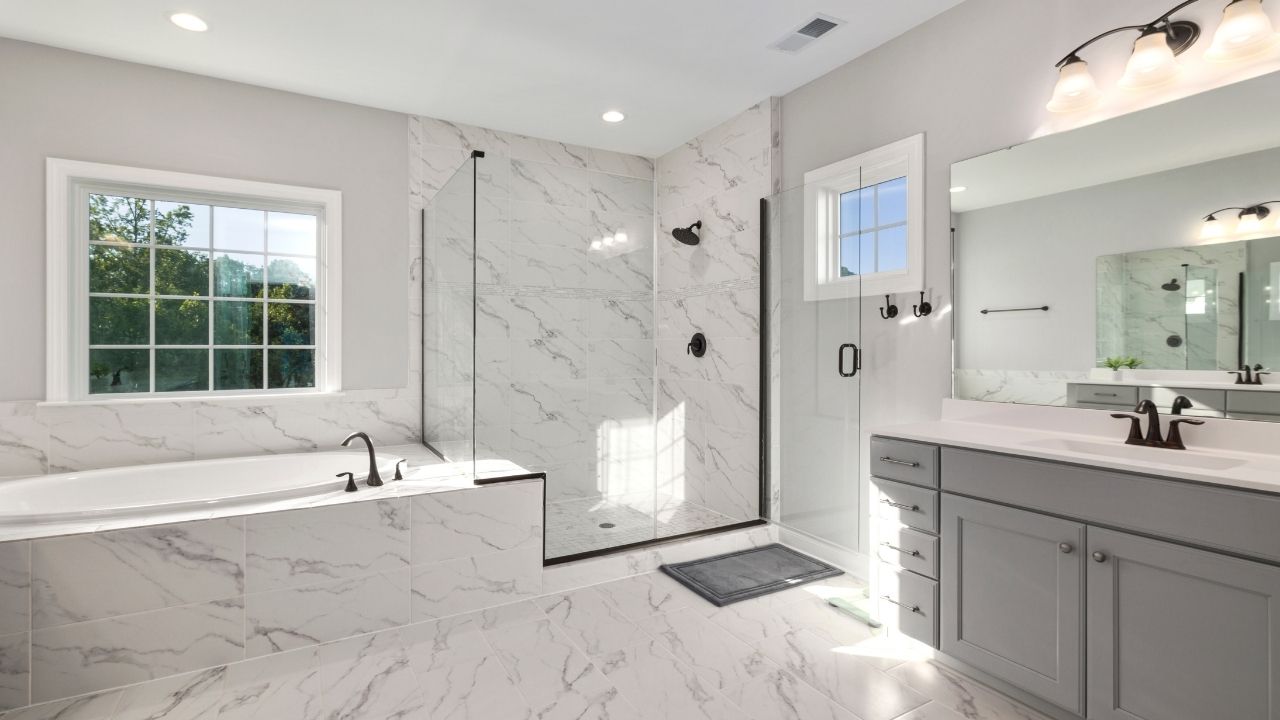Table of Contents [hide]
Step into the world of personal spaces and get ready to explore the fascinating realm of bathrooms… in Spanish! Whether you’re planning a trip to a Spanish-speaking country or simply want to expand your language skills, knowing how to navigate a bathroom is essential. From understanding the anatomy of a bathroom to mastering common phrases, this blog post will equip you with all the vocabulary you need for seamless restroom experiences en español. So, grab your toilet paper (and notepad), because we’re about to dive into the wonderful world of “baños” and “aseos”. Let’s get started on our linguistic journey through the bathroom in Spanish!
The anatomy of a bathroom in Spanish
The anatomy of a bathroom in Spanish is not much different from what you would find in other parts of the world. However, there may be some subtle differences in terms of terminology and layout.
Starting with the basics, you have “el baño” or “el cuarto de baño” which translates to “the bathroom”. Inside the bathroom, you will typically find several key components including “la taza del váter” (toilet bowl), “el lavabo” (sink), and “la ducha o la bañera” (shower or bathtub).
In addition to these essential fixtures, it’s common to see a few more amenities such as “los grifos”, which are the faucets for both hot and cold water. You might also come across “el espejo”, a mirror for personal grooming purposes.
It’s worth noting that toilet paper is referred to as “papel higiénico” or simply “papel”. You may also encounter words like “jabón” (soap) and “toalla” (towel) during your visit to the bathroom.
Understanding the basic anatomy of a bathroom in Spanish can help ensure smooth navigation when using these personal spaces while traveling or living in Spanish-speaking countries.
Common phrases used in the bathroom in Spanish
When it comes to navigating personal spaces, knowing some common phrases in the local language can be incredibly helpful. This holds true for bathrooms as well! Whether you’re traveling to Spain or simply want to expand your language skills, here are a few essential phrases to help you navigate the bathroom in Spanish:
1. ¿Dónde está el baño? (Where is the bathroom?): This phrase is a must-know when nature calls and you need directions fast!
2. Por favor (Please): A simple but important word that can make your request for toilet paper or soap more polite.
3. Gracias (Thank you): Show gratitude when someone points you towards the restroom or helps with any other needs.
4. No hay papel higiénico (There is no toilet paper): Unfortunately, not all bathrooms are stocked up at all times, so this phrase might come handy!
5. ¿Puedo usar el baño? (Can I use the bathroom?): If you find yourself needing a restroom urgently and there isn’t one readily available, this question may come in handy.
6. Cuidado con el suelo mojado (Caution: Wet floor): Be cautious of slippery surfaces by noting this warning commonly found near sinks and showers.
7. Señoras/Caballeros (Ladies/Gentlemen): These signs will help guide you towards gender-specific restrooms if they exist.
Remember, learning these basic phrases will not only help ensure smooth communication but also show respect for local customs while using public facilities abroad!
Tips for using the bathroom in Spain
Familiarize yourself with common bathroom vocabulary: Before using a bathroom in Spain, it’s helpful to know some basic phrases. Learn words like “baño” (bathroom), “aseo” (toilet), “lavabo” (sink), and “papel higiénico” (toilet paper).
Carry your own toilet paper: While many public restrooms in Spain provide toilet paper, it’s always a good idea to carry your own, especially when visiting smaller establishments or public parks.
Mind the bidet: In Spanish bathrooms, you might come across a bidet—a small basin used for personal hygiene after using the toilet. If you’re unfamiliar with how to use it, just skip it and stick to the regular toilet.
Be prepared for separate faucets: In older Spanish buildings, you may encounter separate taps—one for hot water and one for cold water—instead of a single mixer tap. Take extra caution while adjusting the temperature!
Dispose of feminine hygiene products properly: In many parts of Spain, plumbing systems are not designed to handle flushing tampons or sanitary pads down the toilet. Look out for disposal bins provided by most bathrooms.
Respect privacy and cleanliness: Just like anywhere else, be considerate of others by keeping noise levels down and leaving the restroom clean after use.
By following these tips, you’ll feel more confident navigating bathrooms in Spain during your travels! Remember that cultural differences may exist when it comes to restroom etiquette but being respectful is always appreciated!
Conclusion
Having a basic understanding of bathroom vocabulary in Spanish can greatly enhance your experience when traveling or living in Spanish-speaking countries. By familiarizing yourself with the anatomy of a bathroom, common phrases used, and tips for using the bathroom in Spain, you’ll be better equipped to navigate personal spaces with ease.
Remember that practicing these phrases and vocabulary will not only make your daily routines more comfortable but also help you connect with locals on a deeper level. Don’t hesitate to ask for clarification if needed and embrace the opportunity to learn more about cultural differences regarding personal hygiene practices.
So whether you find yourself needing to use the baño, el retrete or el WC while exploring beautiful cities like Barcelona or Madrid, remember that language is key to unlocking new experiences abroad. ¡Buena suerte y disfruta de tu viaje! (Good luck and enjoy your trip!)







